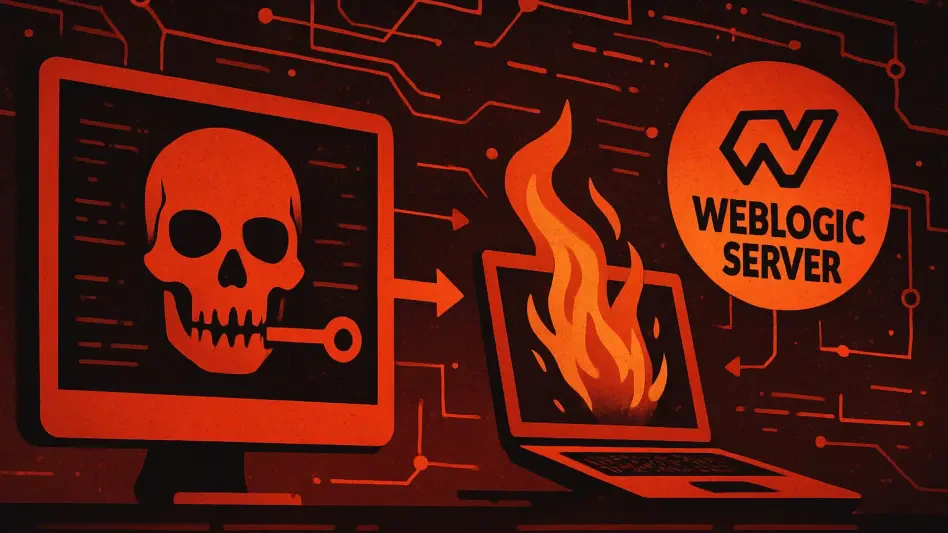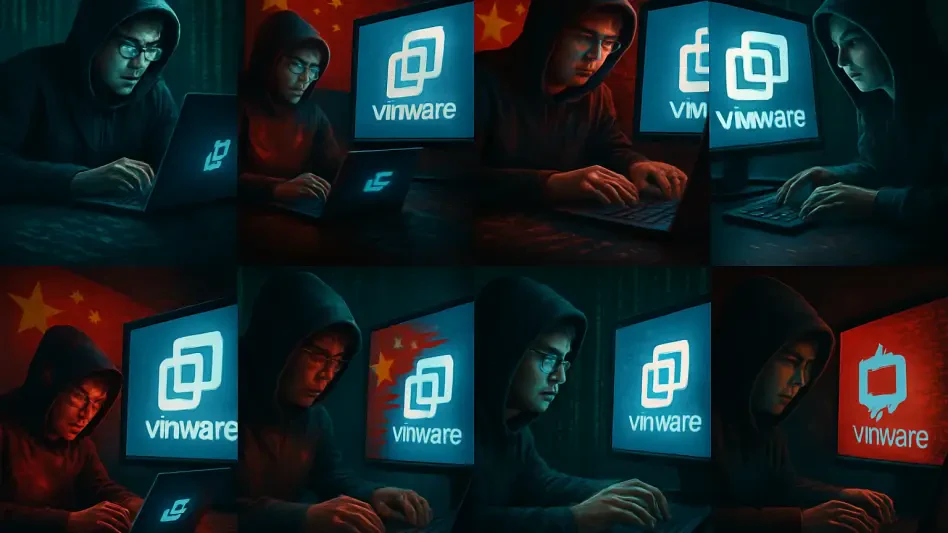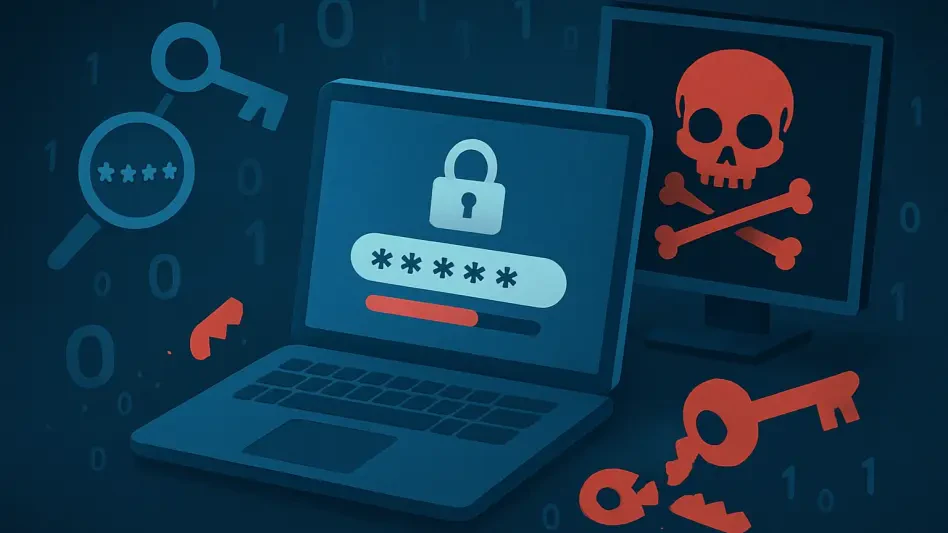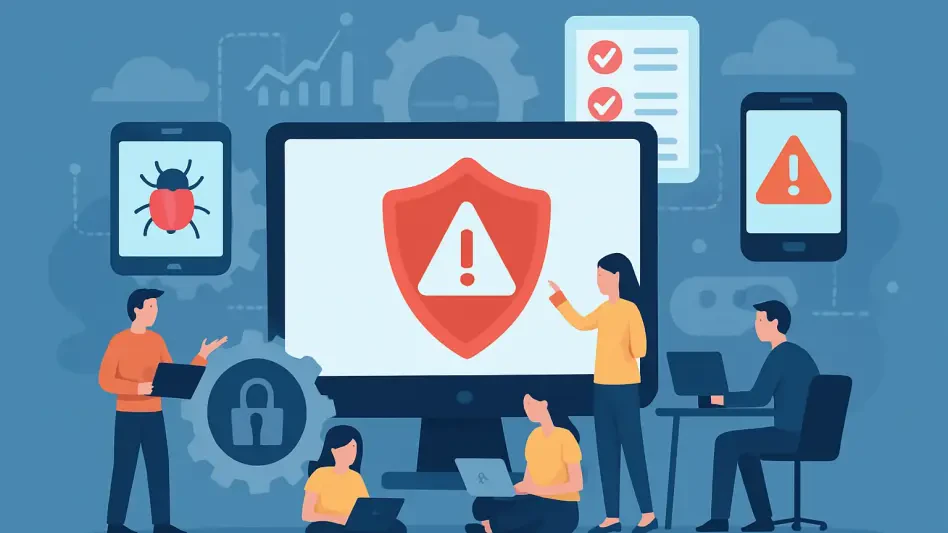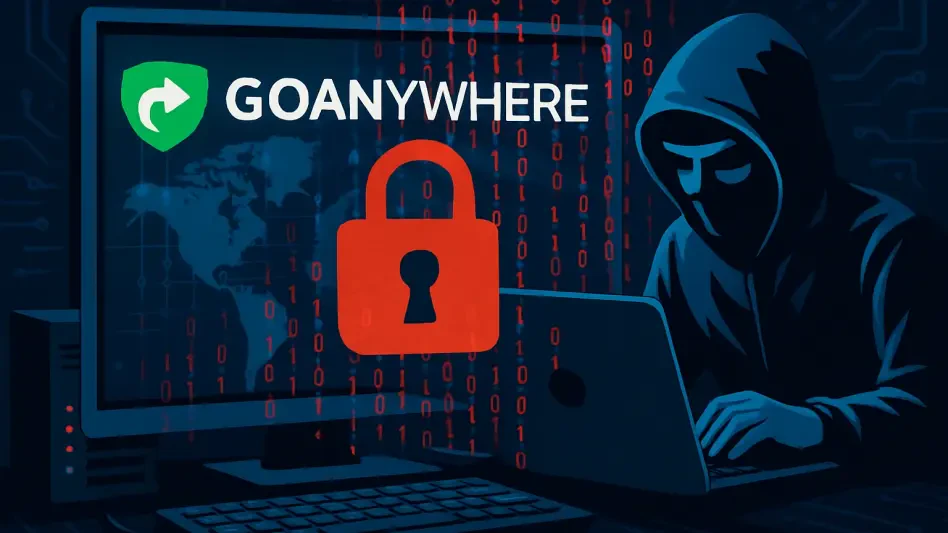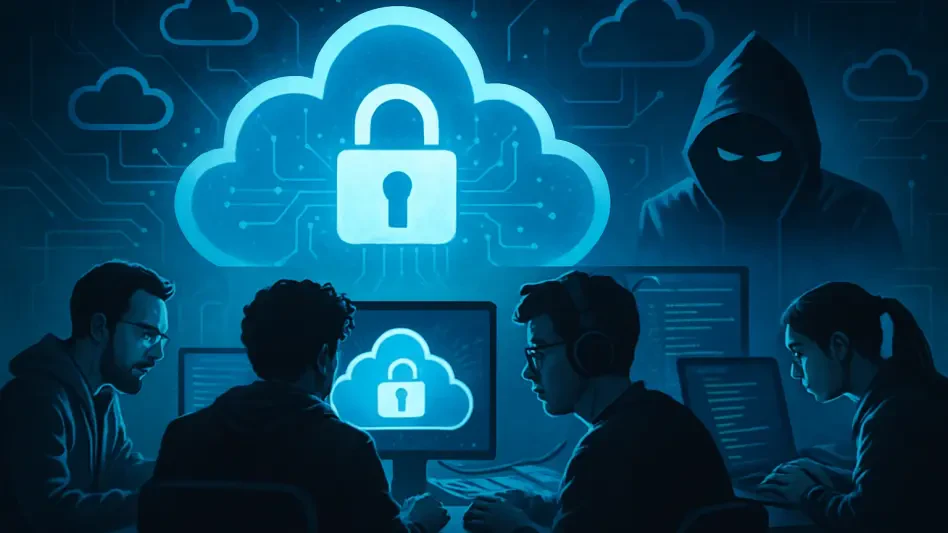The cybersecurity landscape was shaken by the discovery of a zero-day vulnerability in the widely-used 7-Zip archiver, identified as CVE-2025-0411. This vulnerability was exploited by Russian cybercrime groups in a sophisticated campaign targeting Ukrainian organizations. The following article delves into the details of this exploit, the methods used by the attackers, and the implications for cybersecurity.
Introduction to CVE-2025-0411
Discovery and Disclosure
The Trend Micro Zero Day Initiative (ZDI) Threat Hunting team discovered the CVE-2025-0411 vulnerability in September 2024 while analyzing a SmokeLoader malware campaign. This vulnerability was officially disclosed to Igor Pavlov, the creator of 7-Zip, on October 1, 2024. The ZDI team’s discovery highlighted the pressing need for immediate action due to the vulnerability’s potential impact. Immediately recognizing its critical nature, Pavlov and his team embarked on developing a patch to counter the exploit.
On November 30, 2024, 7-Zip version 24.09 was released, addressing the vulnerability and providing necessary fixes to prevent similar exploitations in the future. This timely response aimed to safeguard numerous users relying on 7-Zip for their file compression and archiving needs. The discovery, disclosure, and subsequent patch underscore the collaborative efforts required to tackle emerging cybersecurity threats. The cybersecurity community must remain vigilant and responsive to such vulnerabilities to maintain secure systems and protect against potential attacks.
Technical Details of the Vulnerability
Windows Mark-of-the-Web (MoTW) adds a Zone.Identifier NTFS Alternate Data Stream (ADS) to files from untrusted sources, flagging them for extra security checks. CVE-2025-0411 involves double archiving, where an archive is encapsulated within another archive. This manipulation prevents MoTW from propagating, effectively bypassing the security checks that would typically alert users to potential dangers. By using this method, attackers can execute malicious scripts or executables without triggering the standard MoTW protections.
The complexity of this vulnerability underscores the evolving strategies employed by cybercriminals. By leveraging double archiving, attackers can strategically circumvent layered defense mechanisms designed to protect against untrusted files. Consequently, organizations remain vulnerable to sophisticated attack vectors even if traditional security measures are in place. Understanding the intricacies of CVE-2025-0411 is crucial for developing robust countermeasures. It emphasizes the importance of continuous monitoring and updating of security protocols to address new and innovative methods employed by malicious actors.
Exploitation Methods
Spear-Phishing Campaigns
Russian cybercrime groups used compromised email accounts to send spear-phishing emails containing 7-Zip attachments. These emails were crafted to appear legitimate, often originating from trusted sources within Ukrainian organizations. By utilizing these compromised accounts, attackers gained the trust of their targets, increasing the likelihood of successful exploitation. The emails were carefully designed to appear convincing, incorporating familiar logos, language, and context to avoid arousing suspicion.
The attackers employed homoglyph attacks to spoof document extensions, using characters that look similar to legitimate ones, tricking users into executing the malicious files. For instance, substituting a Cyrillic letter for a Latin one in a file extension ultimately deceived both users and the system itself. Consequently, the attackers could bypass various security layers, which typically rely on file extension verification. This sophisticated approach underscores the importance of user awareness and training in recognizing potentially malicious content. Organizations must implement stringent email filtering and advanced threat protection to mitigate these threats effectively.
Homoglyph Attacks in Detail
Homoglyphs are similar-looking characters used to deceive users into thinking they are interacting with legitimate files or websites. In this campaign, homoglyphs were used to disguise malicious files as legitimate ones, effectively circumventing visual detection by both users and automated systems. For example, the Cyrillic letter “Es” was used instead of the Latin letter “c” in a file name to mimic a .doc file extension. These manipulated file names appeared legitimate to the untrained eye, significantly increasing the likelihood of successful exploitation.
The subtlety of homoglyph attacks poses a significant challenge in detection and prevention. Both users and security systems often rely on visual cues to identify potential threats, and homoglyphs effectively undermine this verification method. Attackers can exploit these visual similarities to introduce malicious content, thereby bypassing initial scrutiny. Organizations must adopt a multi-layered approach to cybersecurity, combining advanced threat detection technologies with comprehensive user education. By doing so, they can enhance their defenses against homoglyph attacks and reduce the risk of successful exploitation.
Real-World Exploitation
Targeted Organizations
Several Ukrainian organizations were confirmed to be targeted or affected by this campaign. These included significant government and civilian entities such as the State Executive Service of Ukraine (SES), Zaporizhzhia Automobile Building Plant (PrJSC ZAZ), and Kyivpastrans (Kyiv Public Transportation Service). Additionally, private sector companies such as SEA Company (an appliances and electronics manufacturer), VUSA (an insurance company), and Dnipro City Regional Pharmacy were also targeted. The inclusion of essential service providers like Kyivvodokanal (Kyiv Water Supply Company) and governmental bodies, like Verkhovyna District State Administration and Zalishchyky City Council, highlights the broad scope and impactful nature of this attack.
The attackers aimed to compromise these organizations through a sophisticated blend of social engineering and technical exploitation. By targeting vital infrastructure and services, the cybercriminals sought to cause widespread disruption and potentially access sensitive information. The exploitation campaign underscores the critical need for heightened vigilance and robust security measures across all sectors, from government to private industry. Understanding the targeted organizations provides insight into the attackers’ strategic objectives and illustrates the necessity for comprehensive defenses spanning various domains.
Impact on Ukrainian Entities
The spear-phishing emails originating from compromised Ukrainian emails were sent to various targets, including government and civilian organizations. Infiltrating trusted communication channels significantly increased the effectiveness of these malicious campaigns, making detection challenging. These emails contained double-archived attachments with homoglyph-manipulated file extensions to bypass security systems. Once the files were opened, malicious content could execute, leading to potential data breaches, system compromises, and consequent disruption of services.
The widespread impact on Ukrainian entities included potential unauthorized access to sensitive government information, disruption of public services, and the compromise of private sector systems. The exploitation of CVE-2025-0411 allowed attackers to execute malicious content without triggering standard security protocols. This sophisticated approach highlights the evolving nature of cyber threats and underscores the importance of developing advanced defense strategies. Ensuring that organizations are equipped with the latest security measures, employee training, and continuous monitoring is essential to mitigate such risks effectively.
Recommendations for Mitigation
Software Updates
To mitigate the risks associated with CVE-2025-0411, it is crucial to update 7-Zip to version 24.09 or later. This update addresses the vulnerability and prevents the exploitation method used by the attackers. Keeping software up-to-date ensures the application of necessary patches and bug fixes, significantly reducing potential vulnerabilities. Regularly updating software across all systems is a fundamental aspect of maintaining robust cybersecurity defenses.
Organizations should prioritize implementing automatic updates for critical software applications to ensure timely application of patches. Additionally, conducting regular audits to verify the update status of all software used within the organization can help identify and rectify any overlooked updates. By diligently maintaining up-to-date software, organizations can effectively mitigate the risks associated with zero-day vulnerabilities and enhance overall security posture.
Email Security Measures
Implementing strict email filtering and anti-spam technologies can help block spear-phishing attacks. Organizations should also consider using advanced threat protection solutions to detect and mitigate sophisticated phishing attempts. Enhanced email security measures can significantly reduce the risk of malicious emails reaching end users. Deploying robust email security solutions can prevent potentially harmful content from entering the organization’s network, thus minimizing the chances of successful exploitation.
In addition to technological solutions, organizations can implement stringent policies guiding email usage and management. Encouraging employees to verify the sender’s authenticity, avoid downloading attachments from untrusted sources, and report any suspicious emails contribute to a comprehensive email security strategy. By combining advanced security technologies with effective policies and user education, organizations can fortify their defenses against sophisticated email-based attacks.
Employee Training
Training employees to recognize and report phishing attempts, including homoglyph attacks, is essential. Regularly updating employees on the latest phishing tactics and the importance of MoTW can enhance organizational security awareness and reduce the risk of successful attacks. Cybersecurity awareness programs should incorporate real-world scenarios and hands-on training exercises to better equip employees with the necessary skills to identify and respond to potential threats.
Developing a culture of proactive vigilance within the organization is pivotal in mitigating social engineering threats. Encouraging employees to report suspicious activities and rewarding proactive behavior can further strengthen the organization’s security posture. Continuous employee training and engagement play a crucial role in establishing a resilient defense against evolving cyber threats, ensuring that the entire organization remains vigilant and prepared.
System Configuration
Disabling the automatic execution of files from untrusted sources and configuring systems to prompt users for verification before opening such files can prevent the execution of malicious content. Implementing stringent system configuration settings can add an extra layer of security, making it harder for attackers to exploit vulnerabilities. This additional layer of security can help mitigate the impact of zero-day vulnerabilities and protect systems from unauthorized access.
Regularly reviewing and updating system configuration settings is essential to adapt to emerging threats. Employing best practices for system security, such as restricting user permissions and ensuring that only necessary applications are installed, can further enhance protection. By continually refining system configurations to respond to the latest cyber threats, organizations can significantly reduce their vulnerability to exploitation attempts.
Domain and URL Filtering
Implementing domain filtering and monitoring to detect and block homoglyph-based phishing attacks is recommended. Using URL filtering to block access to known malicious domains and regularly updating blacklists can further enhance security measures. These proactive steps can prevent users from inadvertently accessing harmful websites and reduce the risk of successful phishing attacks.
In addition to automated filtering, educating users about the importance of verifying URLs before clicking on them can bolster defenses. Encouraging cautious behavior when interacting with links and attachments in emails can decrease the risk of falling victim to homoglyph and other phishing attacks. Combining these technical measures with user education creates a comprehensive approach to mitigating the risks associated with malicious domains and URLs.
Trend Vision One™ Platform
Trend Vision One™ is highlighted as a comprehensive cybersecurity platform that helps enterprises detect and stop threats faster. It consolidates multiple security capabilities, providing complete visibility and automated threat responses. The platform leverages AI and threat intelligence to offer comprehensive risk insights and earlier threat detection. By integrating various security functions into a single platform, Trend Vision One™ delivers a holistic approach to cybersecurity, enabling organizations to respond swiftly to emerging threats.
The platform’s advanced features include real-time threat monitoring, automatic remediation, and in-depth analysis of potential vulnerabilities. Utilizing AI-driven analytics, Trend Vision One™ can identify patterns and anomalies indicative of cyber threats, allowing for proactive defense measures. This robust platform empowers organizations to stay ahead of cybercriminals by implementing timely and effective responses to security incidents. Investing in comprehensive cybersecurity solutions like Trend Vision One™ is essential for organizations aiming to protect their digital assets and maintain operational integrity in an increasingly hostile cyber environment.
In summary, the exploitation of CVE-2025-0411 is a significant event in the cyber front of the ongoing Russo-Ukrainian conflict. It illustrates the evolving nature of cyber threats and the sophisticated techniques employed by cybercriminals. The use of homoglyph attacks in conjunction with a zero-day exploit highlights the need for enhanced cybersecurity training and robust security measures.
Conclusion
The cybersecurity world was rattled by the revelation of a zero-day vulnerability, known as CVE-2025-0411, in the popular 7-Zip file archiver. This weakness became the focal point of a sophisticated attack campaign orchestrated by Russian cybercrime groups, specifically targeting Ukrainian organizations. The vulnerability’s exploitation marks a significant event in the ongoing cybersecurity conflict, highlighting the constant and evolving threat landscape.
The attackers leveraged the flaw in 7-Zip to gain unauthorized access, a move indicative of the high level of skill and planning involved. Their campaign was not a random act but a targeted infiltration, underlining the strategic importance of their objectives. By understanding the nature of this exploit and the methodologies used by these cybercriminals, cybersecurity professionals can better fortify defenses and anticipate potential threats.
This article will explore the technical aspects of the CVE-2025-0411 vulnerability, detailing how it was exploited and the impact it had on the targeted entities. Moreover, the implications for the global cybersecurity community are profound, emphasizing the need for constant vigilance and advancements in security measures. The incident serves as a stark reminder of the importance of rigorous software security, timely updates, and the need for robust countermeasures in an era where cyber threats are ever-present and increasingly sophisticated.


